A) Gondwana
B) Laurasia
C) Pangaea
D) Rodinia
E) Tethys
Correct Answer

verified
Correct Answer
verified
Multiple Choice
Which of these regions is high because of mantle upwelling near a continental rift? 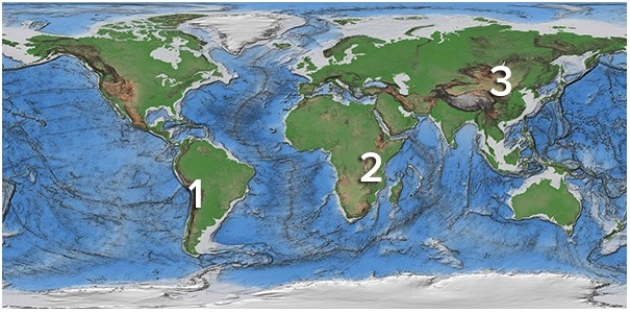
A) 1,Andes of South America
B) 2,East Africa
C) 3,Tibet
D) None of these are correct.
Correct Answer

verified
Correct Answer
verified
Multiple Choice
Which of the following happened to form the features in this region? 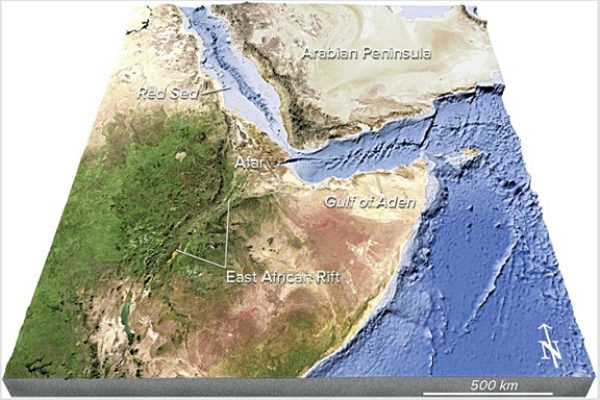
A) Formation of a continental hot spot
B) Continental rifting
C) Seafloor spreading
D) Volcanism that produced new land
E) All of these are correct.
Correct Answer

verified
Correct Answer
verified
Multiple Choice
Which of the following is true about internal and external processes?
A) Internal processes tend to wear away parts of the landscape,while external processes build it back up again.
B) Internal processes and external processes are largely independent of each other.
C) Tectonics is an internal process,and erosion is an external process.
D) Internal processes include processes in the atmosphere and hydrosphere,while external processes occur in the lithosphere.
Correct Answer

verified
Correct Answer
verified
Multiple Choice
On this map of South America,which features are not on a plate boundary? 
A) A and B
B) B and C
C) C and D
D) D and E
E) All of the features are on a plate boundary.
Correct Answer

verified
Correct Answer
verified
Multiple Choice
Which area(s) on this world map is likely to have volcanoes above sea level? 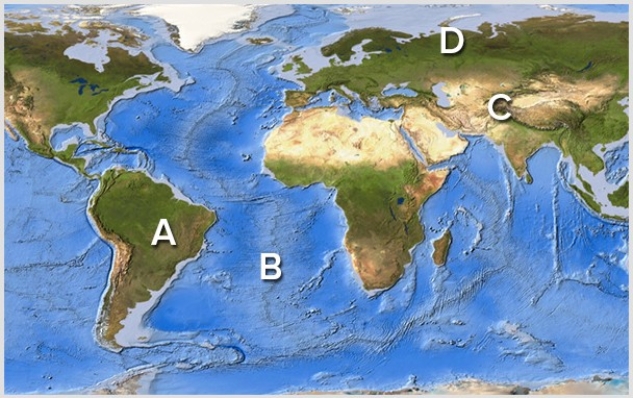
A) A
B) B
C) C
D) D
Correct Answer

verified
Correct Answer
verified
Multiple Choice
This figure shows a northwest-southeast line of islands and seamounts near Hawaii.If location 3 has the oldest rocks and Hawaii (1) has the youngest rocks,which way is the plate moving with respect to the hot spot? 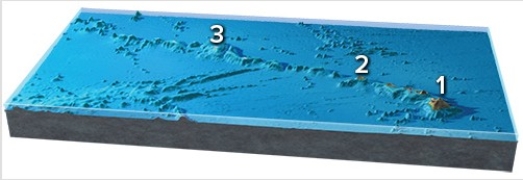
A) Northwest
B) Southeast
C) Northwest and southeast
D) It is not moving in a consistent direction.
Correct Answer

verified
Correct Answer
verified
Multiple Choice
Use your knowledge of plate boundaries to answer whether an earthquake is likely or unlikely to occur at the location of the red circle. 
A) Likely
B) Unlikely
Correct Answer

verified
Correct Answer
verified
Multiple Choice
This figure depicts what type of boundary? 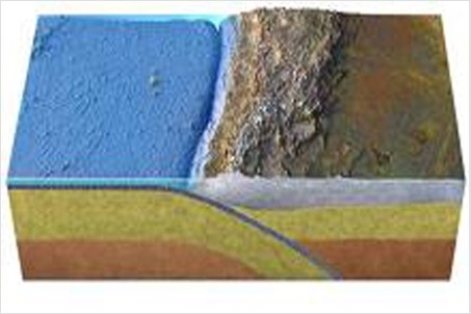
A) Oceanic divergent boundary
B) Ocean-ocean convergent boundary
C) Ocean-continent convergent boundary
D) Transform boundary
E) Continental collision
Correct Answer

verified
Correct Answer
verified
Multiple Choice
Which of the layers in the diagram below are rigid? 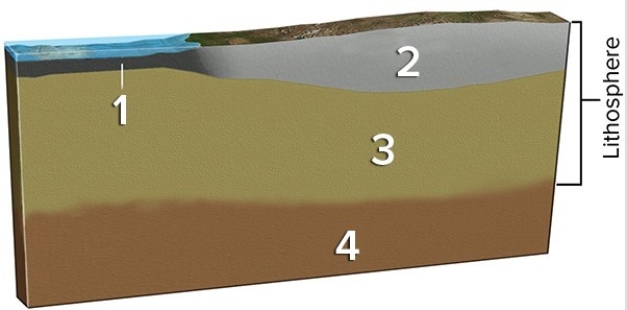
A) 1 and 2
B) 2 and 3
C) 1,2,and 3
D) All of them are correct.
Correct Answer

verified
Correct Answer
verified
Multiple Choice
On this map of the south Atlantic,what is the feature that makes a zigzag pattern on the seafloor? 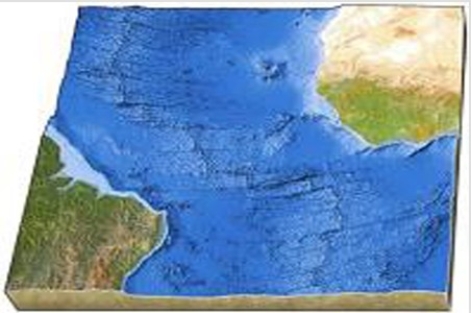
A) Island arc
B) Linear island chain
C) Subduction zone
D) Midocean ridge
E) None of these are correct.
Correct Answer

verified
Correct Answer
verified
Multiple Choice
What is a use of understanding magnetic reversals?
A) Matching the patterns of reversals in a rock sequence to the magnetic timescale
B) Studying magnetic stripes on the seafloor
C) Calculating rates of seafloor spreading
D) All of these are correct.
Correct Answer

verified
Correct Answer
verified
Multiple Choice
What causes magnetic stripes on the seafloor,such as those shown here? 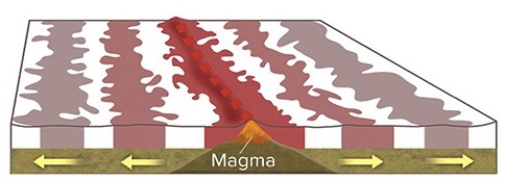
A) Volcanic rocks in oceanic crust are covered by a variable thickness of sediment.
B) Some oceanic crust consists of volcanic rocks and some is composed of sediment.
C) Sometimes Earth's magnetic field points north and sometimes it points south.
D) Some volcanic rocks are formed in normal ways and others have pillows.
Correct Answer

verified
Correct Answer
verified
Multiple Choice
In this figure of Japan,the offshore trenches indicate 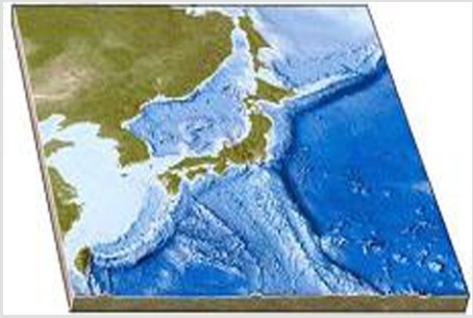
A) continental rifting.
B) a rift in a midocean ridge formed by seafloor spreading.
C) a rift in a midocean ridge formed by transform faulting.
D) subduction of oceanic crust.
Correct Answer

verified
Correct Answer
verified
Multiple Choice
Oceanic crust is
A) thinner and less dense than continental crust.
B) thinner and denser than continental crust.
C) thicker and less dense than continental crust.
D) thicker and denser than continental crust.
Correct Answer

verified
Correct Answer
verified
Multiple Choice
How fast do plates move relative to one another?
A) Centimeters per year
B) Meters per year
C) Kilometers per year
D) One hundred kilometers per year
Correct Answer

verified
Correct Answer
verified
Multiple Choice
What occurs at midocean ridges?
A) Oceanic crust is destroyed.
B) Continental crust is destroyed.
C) Oceanic crust is created.
D) Continental crust is created.
E) All crust is destroyed by magma.
Correct Answer

verified
Correct Answer
verified
Multiple Choice
On the accompanying map,earthquakes are most likely at locations 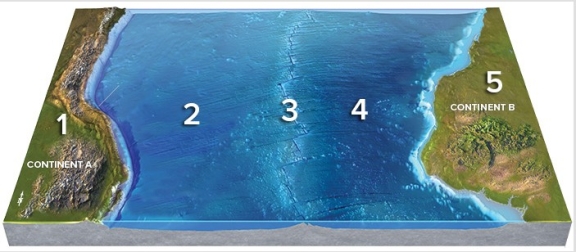
A) 1,2,and 3.
B) 1 and 4.
C) 1 and 5.
D) 2,3,and 4.
E) 4 and 5.
Correct Answer

verified
Correct Answer
verified
Multiple Choice
Based on the position of the houses on Continent A,which one is built in the safest location? 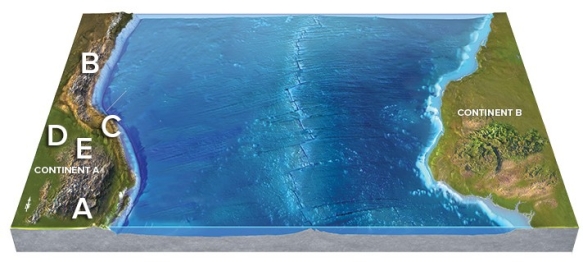
A) House A
B) House B
C) House C
D) House D
E) House E
Correct Answer

verified
Correct Answer
verified
Multiple Choice
What is associated with reversed magnetic polarity?
A) A compass needle would point south.
B) The magnetic signal of seafloor formed with this polarity would be stronger compared to adjacent areas of the seafloor.
C) There are much fewer intervals of reversed polarity than normal polarity.
D) All of these are correct.
Correct Answer

verified
Correct Answer
verified
Showing 21 - 40 of 137
Related Exams